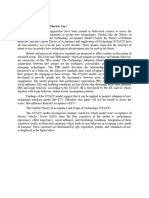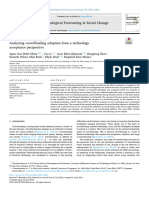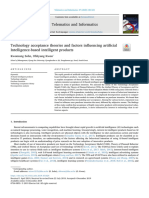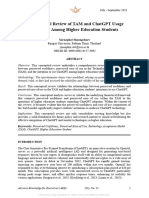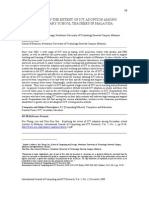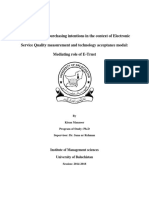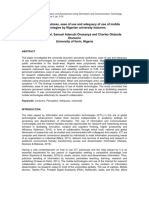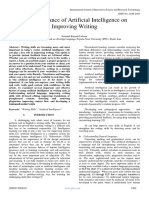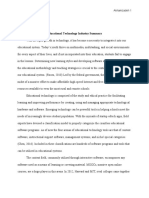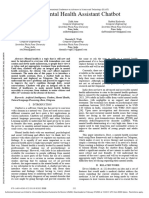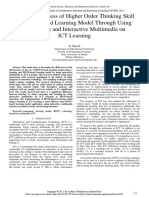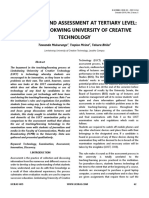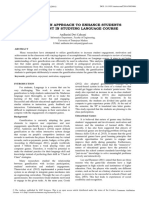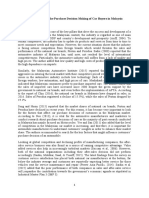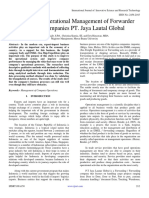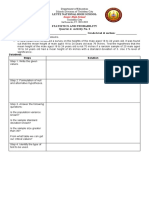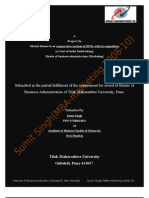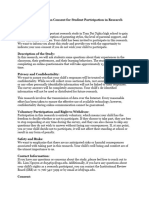0% found this document useful (0 votes)
80 views10 pagesImplementing Technology Acceptance Model 64cebcc8
This study examines factors influencing smallholder farmers' adoption and use of information and communication technologies (ICT) in Indonesia. The researchers surveyed 53 smallholder farmers in three villages in East Java to understand their smartphone usage and perceptions of ICT usefulness and ease of use. They found that 90.5% of respondents used smartphones, and perceived usefulness of ICT was more important than perceived ease of use. The study applied the Technology Acceptance Model to measure ICT adoption and recommends strategies to increase ICT adoption among smallholder farmers to improve access to information and raise incomes.
Uploaded by
Tami UtamiCopyright
© © All Rights Reserved
We take content rights seriously. If you suspect this is your content, claim it here.
Available Formats
Download as PDF, TXT or read online on Scribd
0% found this document useful (0 votes)
80 views10 pagesImplementing Technology Acceptance Model 64cebcc8
This study examines factors influencing smallholder farmers' adoption and use of information and communication technologies (ICT) in Indonesia. The researchers surveyed 53 smallholder farmers in three villages in East Java to understand their smartphone usage and perceptions of ICT usefulness and ease of use. They found that 90.5% of respondents used smartphones, and perceived usefulness of ICT was more important than perceived ease of use. The study applied the Technology Acceptance Model to measure ICT adoption and recommends strategies to increase ICT adoption among smallholder farmers to improve access to information and raise incomes.
Uploaded by
Tami UtamiCopyright
© © All Rights Reserved
We take content rights seriously. If you suspect this is your content, claim it here.
Available Formats
Download as PDF, TXT or read online on Scribd
/ 10
